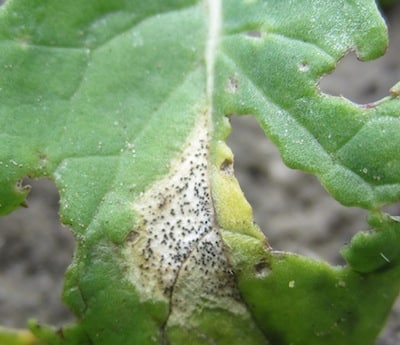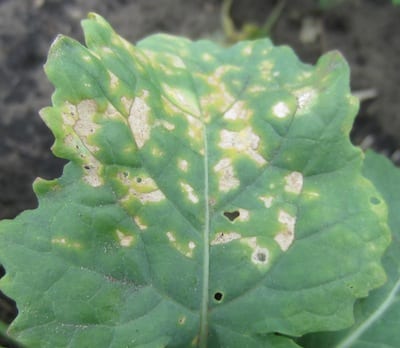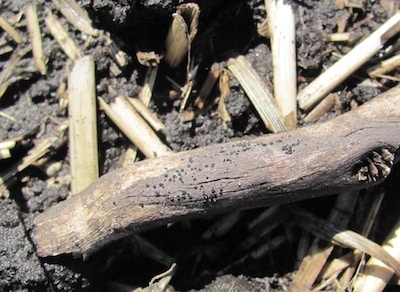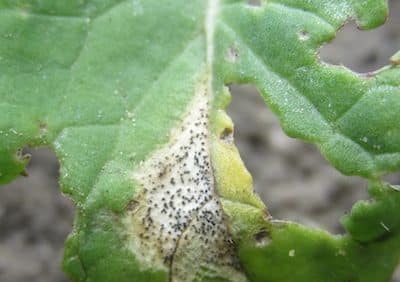


Scouting now for lesions on young canola plants and for pseudothecia on blackleg stubble is one step in blackleg management.
Here are factors that increase the blackleg risk. The more of these risk factors that apply, the greater the risk:
—Tight canola rotation
—Using the same variety in the rotation
—Using the same herbicide tolerant system as a previous canola crop will mean uncontrollable volunteers in the current crop. Volunteers will have the resistance of the previous variety (or worse if resistance single genes were in one parent and then segregation occurs in F1). These volunteers will detract from efforts to change resistance from the previous crop.
—Yield loss to blackleg in previous years
—Using untreated non-certified seed
—Poor brassica weed control in previous years. These weeds can host blackleg in non-canola years
—Moist soils and warm humid conditions
—Lesions on leaves or cotyledons. These tiny lesions may be tricky to spot, and you probably won’t see many of them. When scouting, also look for blackleg pseudothecia (black spots) on old canola residue, which may still be present on fields with a tight rotation. Note: Even if you can’t spot lesions on new plants or black spots on old stubble, infection could still be happening.
—Damage from early season hail can provide entry points for disease infection, and these early infections are more likely to have an impact on yield.
If the above factors and your crop scouting suggest high risk for blackleg, consider fungicide as an additional tool to limit infection and yield loss. A recent study in western Canada found that fungicide applied at the 2- to 4-leaf stage of the crop can reduce disease severity and increase yield when varieties are highly susceptible to the disease and when the disease risk is moderate to high. If unsure about the decision, leave a few check strips and compare yields of treated to untreated areas.
For more information on product options, click your province for a link to your guide: Alberta Saskatchewan Manitoba.
Click here for more blackleg management tips and here for more on blackleg in general. The Canola Diagnostic Tool can help with diagnosis of problems spotted in the field.
